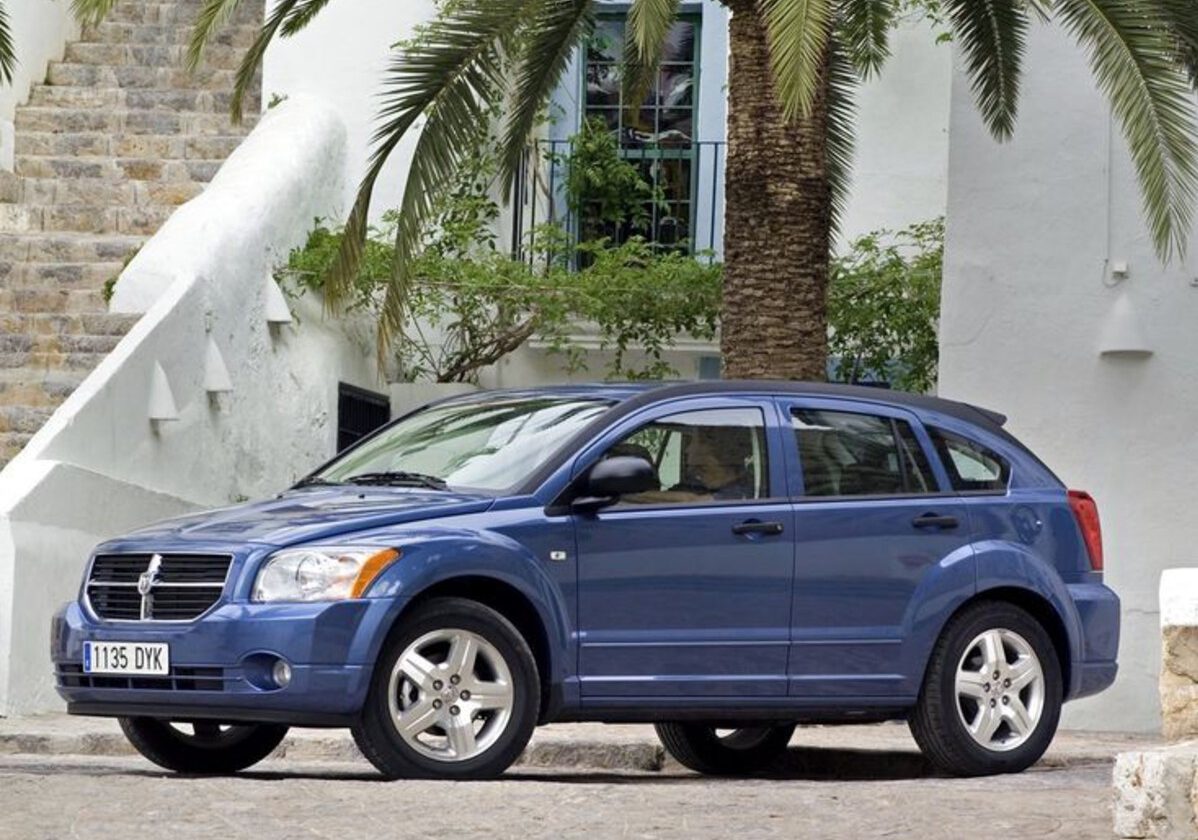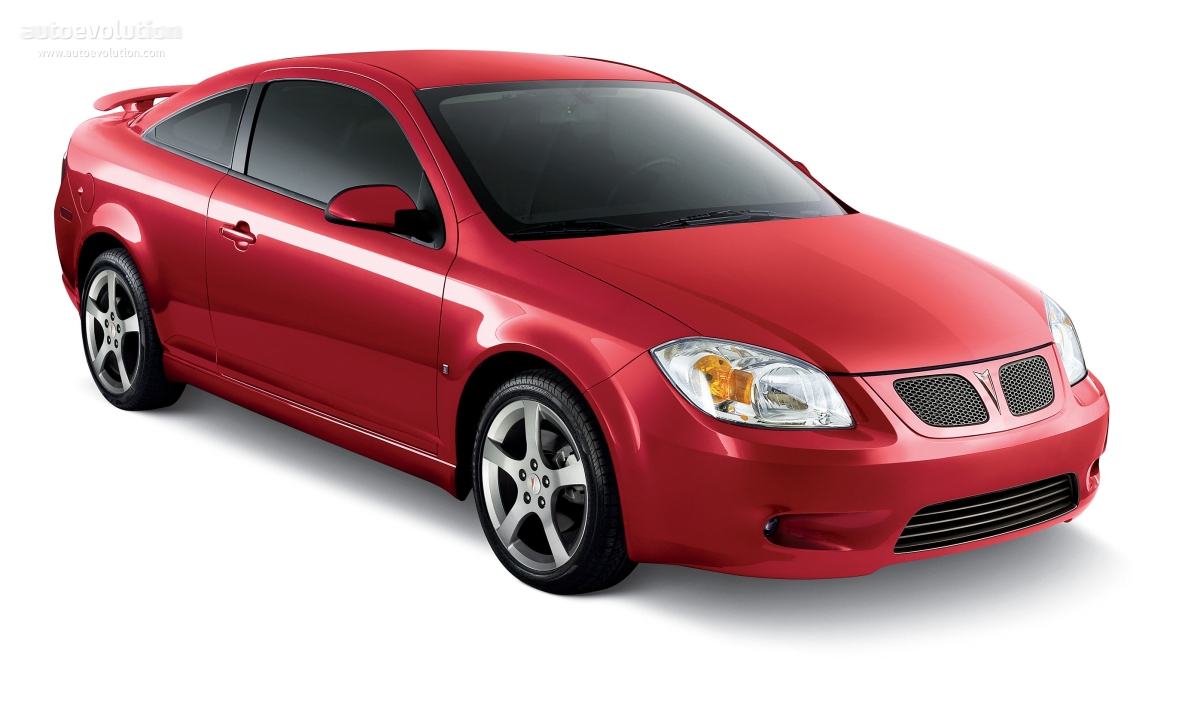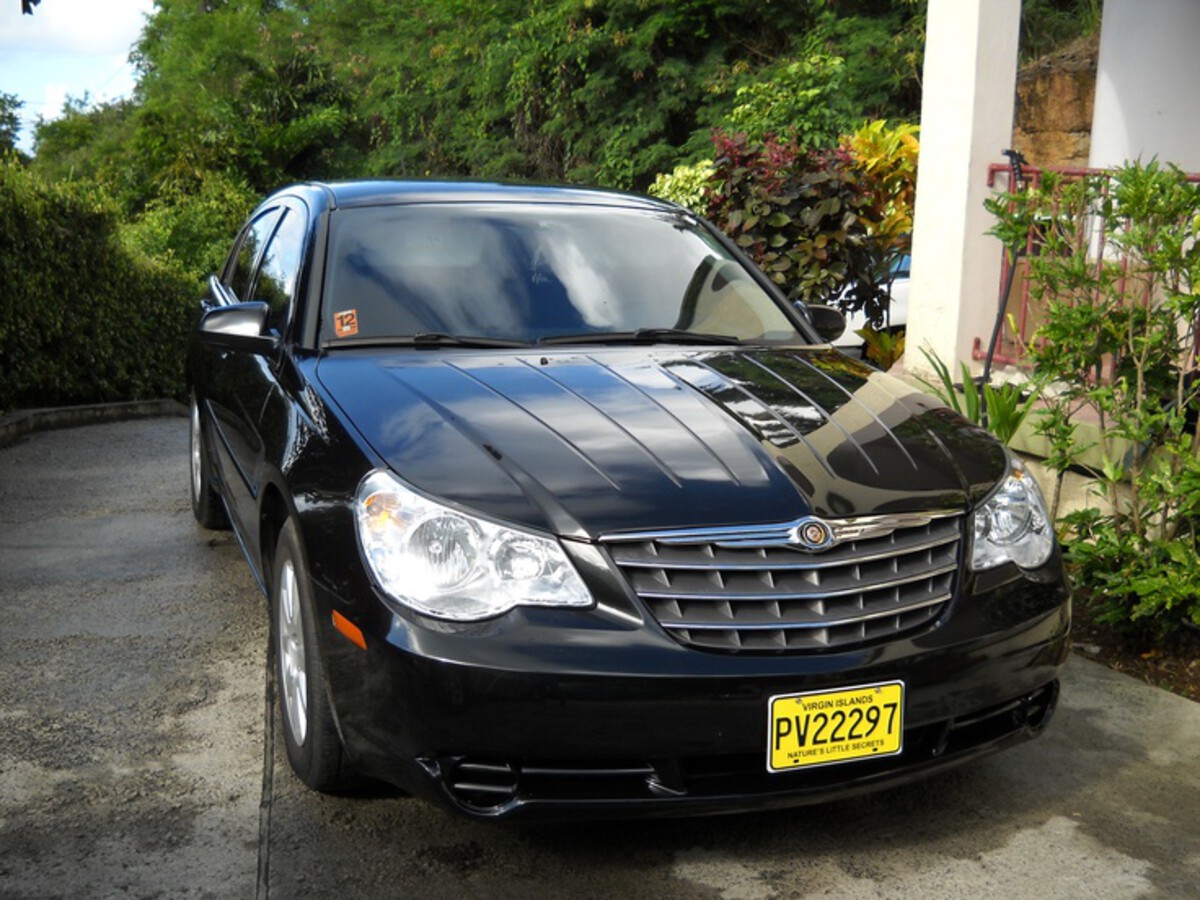The automotive industry has witnessed a remarkable evolution in interior design and functionality, with seat mechanisms representing one of the most critical aspects of vehicle ergonomics and user experience.
The distinction between cars equipped with quick-release seats and those plagued by stuck latches extends far beyond mere convenience, touching upon safety, accessibility, maintenance, and ownership satisfaction.
Quick-release seat mechanisms represent the pinnacle of automotive engineering ingenuity, designed to provide seamless adjustment and removal capabilities that enhance both daily usability and emergency situations.
These systems typically incorporate precision-engineered levers, pneumatic assists, and well-lubricated tracks that respond instantly to user input.
The benefits extend to mechanics and detailers who require frequent seat removal, emergency responders who need rapid access to trapped occupants, and everyday users who demand effortless customization of their driving position.
Conversely, vehicles suffering from stuck latch mechanisms present a stark contrast, often resulting from poor design choices, inadequate materials, insufficient maintenance protocols, or manufacturing cost-cutting measures.
These problematic systems can transform routine seat adjustments into frustrating ordeals, potentially compromising safety during critical moments and significantly degrading the ownership experience. The implications ripple through various aspects of vehicle operation, from routine cleaning and maintenance to emergency evacuation procedures.
The psychological impact of seat functionality cannot be understated. Drivers who struggle with basic seat adjustments often develop negative associations with their vehicles, leading to decreased satisfaction and potential safety concerns as they may avoid necessary position changes.
Furthermore, the resale value of vehicles with problematic seat mechanisms typically suffers, as prospective buyers recognize the ongoing inconvenience and potential repair costs.
This comprehensive analysis examines ten vehicles representing both ends of this spectrum, providing detailed insights into the engineering principles, user experiences, and long-term implications of superior versus inferior seat latch systems.
Understanding these differences empowers consumers to make informed purchasing decisions while highlighting the importance of this often-overlooked automotive feature.
5 Cars With Quick-Release Seats
These exceptionally designed seating systems feature precision-engineered release mechanisms that operate smoothly and consistently through years of use and varying load conditions.
The Graco 4Ever DLX and Chicco Fit360 demonstrate some of the group’s best tightening and release mechanisms, allowing parents to install and remove seats with minimal effort and maximum confidence.
The Chicco GoFit Plus Backless Booster features a quick-release LATCH to help stabilize the seat when children get in and out, combining convenience with safety through thoughtful engineering.
BuiltRight Industries’ Ford F-Series Rear Seat Release exemplifies this philosophy with an OEM-inspired pull strap and secure bracket for quick release, making storage access behind truck seats effortless and reliable for daily use.
1. Porsche 911 GT3 RS
The Porsche 911 GT3 RS stands as the gold standard for quick-release seat technology, incorporating racing-derived mechanisms that prioritize both performance and practicality.
The vehicle’s bucket seats feature revolutionary quick-release systems originally developed for professional motorsports, where rapid driver changes during endurance races demand split-second seat removal and installation capabilities.
The engineering behind these seats involves precisely machined aluminum levers connected to spring-loaded locking mechanisms that engage and disengage with minimal force application.
Users simply pull two ergonomically positioned handles simultaneously, allowing the entire seat assembly to slide forward and lift clear of its mounting points within seconds.
This system eliminates the traditional bolt-down approach, replacing it with positive-locking cam mechanisms that provide superior security while maintaining instant release capability.
The quick-release functionality extends beyond mere convenience, serving critical safety purposes in motorsport applications where rapid egress or driver extraction may be necessary.
The seats incorporate five-point harness mounting points integrated with the quick-release system, ensuring that safety equipment can be quickly disconnected alongside seat removal. This integrated approach demonstrates Porsche’s commitment to comprehensive system design rather than component-level thinking.

Daily usability benefits include effortless position adjustments that accommodate drivers of varying statures without the typical delays associated with electric seat motors or manual track adjustments.
The mechanical advantage provided by the lever system means that even slight individuals can manipulate these substantial racing seats with minimal effort.
Additionally, the system’s reliability stems from its mechanical simplicity fewer electronic components mean reduced failure points and consistent operation regardless of battery condition or electrical system status.
The materials science behind these mechanisms deserves particular attention. Porsche utilizes aerospace-grade aluminum alloys for structural components, combined with specialized steel for high-stress pivot points and bearing surfaces.
These materials undergo specific heat treatments and surface coatings to resist wear, corrosion, and fatigue over thousands of operation cycles. The result is a system that maintains precise tolerances and smooth operation throughout the vehicle’s operational lifetime.
Maintenance requirements remain minimal due to the robust design and quality materials. Periodic lubrication of pivot points and track surfaces represents the primary service need, typically performed during routine vehicle maintenance intervals.
The accessibility of these components for service further enhances the ownership experience, as technicians can quickly inspect and maintain the systems without extensive disassembly procedures.
2. BMW M4 Competition
BMW’s approach to quick-release seat technology in the M4 Competition demonstrates how high-performance capabilities can be seamlessly integrated into daily-driver vehicles.
The electrically-assisted quick-release system combines traditional German engineering precision with modern electronic control systems to create an intuitive and reliable user experience that satisfies both track enthusiasts and luxury car buyers.
The seat mechanism incorporates dual-motor systems for both longitudinal and height adjustments, complemented by memory functions that store multiple driver preferences with unprecedented accuracy.
The quick-release aspect emerges through BMW’s innovative approach to track disconnect points, allowing rapid seat removal for track day preparations while maintaining full electronic functionality for street driving.
This dual-personality design philosophy reflects BMW’s understanding that modern performance car buyers demand versatility without compromise.
Electronic integration extends throughout the system, with sensors monitoring seat position, occupant weight, and adjustment status to optimize airbag deployment characteristics and seatbelt pre-tensioning systems.
The quick-release mechanism incorporates these safety systems through break-away connectors that automatically disengage during seat removal while maintaining system integrity for reinstallation.

This sophisticated approach ensures that safety systems remain fully functional regardless of seat configuration changes. The user interface deserves particular recognition for its intuitive design and feedback systems.
LED indicators provide clear visual confirmation of lock engagement status, while haptic feedback through the release levers ensures that users can confirm proper engagement without visual verification.
This attention to user experience details reflects BMW’s commitment to luxury market expectations while maintaining performance car functionality.
Build quality and materials selection demonstrate BMW’s long-term reliability focus. The seat tracks utilize hardened steel with precision-ground bearing surfaces, while the quick-release mechanisms employ stainless steel components in critical wear areas.
Electronic components receive marine-grade environmental sealing to protect against moisture, temperature extremes, and electromagnetic interference that could compromise system operation.
Service accessibility and diagnostic capabilities further enhance the ownership experience. BMW’s integrated diagnostic systems can monitor seat mechanism health, providing early warning of potential issues before they impact functionality.
When service is required, the modular design allows technicians to replace individual components without complete system removal, reducing repair costs and service time while maintaining system reliability.
3. McLaren 720S
McLaren’s 720S incorporates seat release technology directly derived from their Formula One racing program, representing the ultimate convergence of motorsport innovation and road car practicality.
The carbon fiber seat shells integrate quick-release mechanisms that embody the weight-conscious, performance-focused philosophy that defines McLaren’s approach to automotive engineering.
The technical foundation rests upon McLaren’s proprietary MonoCell carbon fiber construction, which provides mounting points engineered to accommodate both quick-release functionality and crash safety requirements.
The seat mechanism utilizes titanium components for critical stress-bearing elements, achieving the optimal balance between strength, weight, and corrosion resistance that characterizes McLaren’s uncompromising approach to materials science. Operation of the quick-release system reflects McLaren’s racing heritage through its emphasis on speed and reliability under pressure.
Twin release levers positioned for single-handed operation allow drivers to disengage the seat mechanism while maintaining vehicle control, a capability that proves invaluable during track sessions where rapid position adjustments may be necessary between driving stints.
The mechanical advantage provided by the lever geometry ensures that full release can be achieved with minimal force application, even when the seat is loaded with driver weight and safety equipment.

The integration of active suspension and aerodynamic systems with seat positioning demonstrates McLaren’s systems-level engineering approach.
The vehicle’s computer systems continuously monitor seat position to optimize suspension settings, aerodynamic balance, and even engine mapping to account for weight distribution changes. This holistic integration ensures that the quick-release functionality enhances rather than compromises the vehicle’s dynamic capabilities.
Carbon fiber construction extends throughout the seat assembly, with the shell, mounting brackets, and even release mechanism housings utilizing various carbon fiber weaves optimized for their specific load requirements.
This material choice delivers exceptional strength-to-weight ratios while providing the precise dimensional stability necessary for consistent quick-release operation over time. The visual impact of exposed carbon fiber components also reinforces the connection to McLaren’s racing heritage.
Durability testing for these systems exceeds typical automotive standards, incorporating the cyclic loading and environmental extremes experienced in professional motorsport.
The result is a quick-release mechanism capable of reliable operation through hundreds of thousands of cycles while maintaining the precise tolerances necessary for both safety and performance.
This over-engineering approach ensures that road car owners experience the same reliability that McLaren’s racing teams depend upon during competition.
4. Audi RS6 Avant
Audi’s implementation of quick-release seat technology in the RS6 Avant showcases how performance-oriented features can enhance practical family vehicles without compromising comfort or convenience.
The system represents Audi’s Quattro GmbH division’s approach to integrating motorsport-derived technology into vehicles designed for daily utility and long-distance comfort.
The seat mechanism combines Audi’s traditional emphasis on build quality with innovative design solutions that address the unique requirements of a performance wagon.
The quick-release system facilitates rapid reconfiguration of the interior space, allowing owners to transition between high-performance driving configurations and maximum cargo capacity within minutes. This versatility directly addresses the fundamental appeal of the sport wagon concept.
Electrical integration throughout the system demonstrates Audi’s expertise in automotive electronics and their commitment to user-friendly operation.
The quick-release mechanism incorporates position memory systems that can store and recall multiple configurations automatically, accommodating different drivers and use scenarios without manual readjustment.
Touch-sensitive controls and voice command integration further enhance the user experience by eliminating the need for physical manipulation of release mechanisms during routine adjustments.

The pneumatic assistance system deserves particular attention for its contribution to effortless operation. Compressed air stored in dedicated reservoirs provides the mechanical advantage necessary to move the substantial seat assemblies with minimal user effort.
This system maintains consistent operation regardless of external temperature conditions or seat loading, ensuring that the quick-release functionality remains accessible to users of all physical capabilities.
Material selection and surface treatments reflect Audi’s luxury market positioning while maintaining the durability necessary for reliable quick-release operation.
Aluminum components receive anodized finishes that provide both corrosion resistance and visual appeal, while steel elements undergo specialized coatings that enhance wear resistance without compromising dimensional tolerances.
These premium materials contribute to the long-term reliability that Audi owners expect. The integration of safety systems with quick-release functionality demonstrates Audi’s comprehensive approach to occupant protection.
Seat-mounted side airbags, seatbelt pre-tensioners, and occupancy sensors all incorporate break-away connectors that automatically disengage during seat removal while maintaining full functionality upon reinstallation. This safety-conscious design ensures that the quick-release capability never compromises occupant protection systems.
Also Read: 5 Cars With Generous Legroom vs 5 With Tight Rear Seats
5. Ferrari 488 Pista
Ferrari’s 488 Pista incorporates quick-release seat technology that directly reflects the company’s Formula One heritage and their commitment to providing road car customers with authentic racing experiences.
The system embodies Ferrari’s philosophy that every component must contribute to both performance and emotional engagement, creating seat mechanisms that are as satisfying to operate as they are functionally superior.
The engineering foundation utilizes Ferrari’s proprietary carbon fiber manufacturing techniques, developed through decades of Formula One competition and refined for road car applications.
The seat shells incorporate directional carbon fiber weaves that optimize strength characteristics for the specific load paths encountered during quick-release operation, demonstrating Ferrari’s materials science expertise and their commitment to weight optimization without compromising safety.
Operational characteristics reflect Ferrari’s understanding of driver psychology and the importance of mechanical feedback in creating emotional connections with the vehicle.
The quick-release levers provide carefully calibrated resistance levels and positive engagement feedback that communicates system status through tactile sensations.
This attention to the sensory experience of operating the mechanism transforms routine seat adjustments into moments that reinforce the connection between driver and machine.

The integration of track-focused features with road car refinement showcases Ferrari’s ability to balance competing requirements without compromise.
The quick-release system accommodates both street driving comfort features and track day necessities such as racing harness mounting points and rapid helmet clearance adjustments. This versatility ensures that owners can fully exploit the vehicle’s capabilities across the entire spectrum of intended use cases.
Manufacturing precision and quality control standards exceed typical automotive industry norms, reflecting Ferrari’s low-volume production approach and their commitment to hand-assembled excellence.
Each seat mechanism undergoes individual testing and calibration to ensure optimal operation, with tolerances maintained to standards typically reserved for aerospace applications. This artisanal approach to manufacturing ensures consistent performance and long-term reliability.
The aesthetic integration of functional components demonstrates Ferrari’s commitment to visual excellence alongside mechanical performance. Quick-release mechanisms are designed as jewelry-like details that enhance the interior’s visual appeal while providing superior functionality.
This approach reflects Ferrari’s understanding that emotional appeal and functional excellence must coexist to create truly exceptional automotive experiences.
5 Cars With Stuck Latches
These problematic seating systems plague users with release mechanisms that jam, stick, or fail completely, transforming simple seat adjustments into lengthy struggles requiring excessive force and multiple attempts.
The Evenflo Triumph DLX exemplifies these issues where users report pushing the gray button on the latch mechanism until their thumbs are sore, with the mechanism staying tight and refusing to release despite repeated attempts.
Hook-style connectors are often hard to attach and very hard to unhook, requiring users to first loosen the LATCH strap, which becomes extremely difficult due to tension buildup in the system.
The Safety 1st Grow and Go All-in-One received poor ratings for its release mechanism, demonstrating how inadequate engineering creates safety concerns and user frustration through unreliable operation.
1. Chevrolet Cobalt (2005-2010)
The Chevrolet Cobalt’s seat latch problems represent a cautionary tale of how cost-cutting measures can severely impact user experience and long-term reliability.
General Motors’ decision to utilize substandard materials and simplified mechanisms in pursuit of competitive pricing created seat systems that frequently failed to provide the basic functionality that drivers rightfully expect from their vehicles.
The root cause of the Cobalt’s seat latch issues stems from the use of plastic components in applications where metal would provide superior durability and reliability.
The primary release mechanisms incorporated injection-molded plastic levers and pawls that were insufficiently robust for the repetitive loading and environmental stresses encountered in automotive applications.
These components demonstrated a tendency to crack, bind, or completely fracture under normal operating conditions, leaving drivers unable to adjust their seating positions.
Environmental factors compounded the material selection problems, as the plastic components proved susceptible to temperature-related expansion and contraction that altered critical dimensional relationships.
Cold weather conditions frequently caused the latch mechanisms to bind completely, while extreme heat could cause plastic deformation that prevented proper engagement or release.
This temperature sensitivity meant that owners experienced seasonal variations in seat functionality, with problems typically worsening over time as repeated thermal cycling degraded the plastic components.

The design geometry of the latch mechanisms also contributed to operational problems, with insufficient mechanical advantage provided by the release levers.
Users, particularly those with limited upper body strength, often found themselves unable to generate sufficient force to overcome binding or corrosion-related resistance in the latch mechanisms.
This accessibility issue was particularly problematic for elderly drivers or those with physical limitations who had specifically chosen the Cobalt for its intended ease of use.
Corrosion susceptibility represented another significant failure mode, as the seat tracks and latch mechanisms lacked adequate protective coatings.
Road salt, moisture, and general environmental exposure caused rapid degradation of critical bearing surfaces and pivot points. The resulting corrosion not only impeded smooth operation but also accelerated wear of the already marginal plastic components, creating a cascade of failures that rendered the seat adjustment systems progressively less functional.
The economic impact on owners extended beyond mere inconvenience, as replacement parts were expensive relative to the vehicle’s value, and labor costs for seat mechanism repair often exceeded the cost-effectiveness threshold for older vehicles.
This situation left many owners with permanently malfunctioning seat adjustments, compromising both comfort and safety while negatively impacting resale values and ownership satisfaction.
2. Dodge Caliber (2007-2012)
The Dodge Caliber’s seat latch problems illuminate how poor engineering execution can transform promising design concepts into sources of chronic owner frustration.
Chrysler’s attempt to create innovative seat mechanisms with enhanced adjustability ultimately resulted in overly complex systems that proved unreliable in real-world applications, demonstrating the critical importance of robust engineering validation and testing.
The fundamental design flaw centered on the incorporation of too many pivot points and mechanical interfaces within the seat adjustment mechanisms.
While this complexity was intended to provide superior adjustability and comfort, it created numerous potential failure points and increased the likelihood of binding or jamming under normal operating conditions.
The interconnected nature of these mechanisms meant that failure of any single component could compromise the entire adjustment system. Material selection compounded the complexity issues, with Chrysler utilizing dissimilar metals in close proximity without adequate consideration for galvanic corrosion potential.
The resulting electrochemical reactions caused accelerated degradation of critical components, particularly in climates with high humidity or road salt exposure. This corrosion not only impeded mechanical operation but also created rough surfaces that further increased friction and binding tendencies.

The lubrication system design proved inadequate for long-term reliability, with insufficient provisions for maintaining proper lubrication of the numerous bearing surfaces and pivot points.
Factory-applied lubricants degraded over time, and the mechanism design made field relubrication difficult or impossible without extensive disassembly. This maintenance oversight ensured that operational smoothness would deteriorate progressively throughout the vehicle’s service life.
Quality control during manufacturing appears to have been inconsistent, with significant variations in adjustment tolerances and assembly quality between individual vehicles.
Some Calibers experienced seat latch problems from delivery, while others developed issues gradually as wear and environmental factors accumulated. This inconsistency suggests inadequate process control during production and insufficient validation testing of the seat mechanisms before market introduction.
The user interface design further complicated the operational problems, with release mechanisms that were poorly positioned and difficult to locate or operate.
The combination of mechanical binding and poor ergonomics meant that users often applied excessive force in attempts to operate stuck mechanisms, leading to component damage and complete system failure. This design oversight transformed temporary binding issues into permanent mechanical failures.
3. Saturn Ion (2003-2007)
The Saturn Ion’s seat latch difficulties exemplify the challenges faced by budget automotive brands attempting to deliver acceptable functionality while meeting aggressive cost targets.
General Motors’ Saturn division incorporated seat mechanisms that represented the minimum acceptable functionality rather than providing reliable long-term operation, resulting in systems that frequently failed to meet basic user expectations.
The core problem stemmed from Saturn’s decision to utilize simplified seat track designs that eliminated many of the refinements found in higher-tier GM products.
These cost-reduction measures included the use of thinner gauge steel for track construction, elimination of protective coatings, and simplified bearing arrangements that increased friction and wear rates. The resulting mechanisms provided barely adequate initial functionality but deteriorated rapidly under normal use conditions.
Manufacturing tolerances for the Ion’s seat components appear to have been loosely controlled, resulting in significant variations in fit and function between individual vehicles.
Some units demonstrated acceptable operation throughout their service life, while others experienced immediate binding or excessive play that compromised both adjustability and safety. This inconsistency suggests inadequate quality control processes and cost-driven compromises in manufacturing precision.

The absence of adequate environmental protection for seat mechanisms proved particularly problematic in harsh climate conditions. Without proper sealing or protective coatings, moisture intrusion led to rapid corrosion of track surfaces and mechanical components.
This environmental vulnerability was exacerbated by the use of dissimilar metals in the construction, creating galvanic corrosion cells that accelerated component degradation.
Serviceability of the Ion’s seat mechanisms presented additional challenges for both owners and service technicians. The simplified design that reduced manufacturing costs also eliminated many of the access points and modular features that would facilitate maintenance or repair.
When problems developed, the entire seat assembly often required removal for service, increasing repair costs and complexity beyond economical thresholds for older vehicles.
The long-term reliability implications of these design compromises became apparent as Ion vehicles aged, with seat adjustment problems becoming increasingly common after the warranty period expired.
Owners faced expensive repair options for systems that should have provided decades of reliable service, contributing to the perception of poor quality that ultimately contributed to Saturn’s discontinuation as a brand.
4. Pontiac G5 (2007-2009)
The Pontiac G5’s brief production run was marked by persistent seat latch problems that demonstrated how platform sharing can propagate design flaws across multiple vehicle lines.
As a rebadged Chevrolet Cobalt, the G5 inherited many of the same fundamental seat mechanism problems while adding its unique complications related to trim-specific components and assembly variations.
The seat mechanism design carried over the Cobalt’s problematic plastic latch components while incorporating Pontiac-specific trim pieces that created additional interfaces and potential failure points.
These brand-specific modifications were implemented without comprehensive validation testing, resulting in mechanisms that were even less reliable than the already problematic Cobalt systems. The interaction between existing design flaws and new complications created a perfect storm of seat adjustment difficulties.
Assembly quality control appears to have been inconsistent during the G5’s short production run, with evidence suggesting that manufacturing processes were not fully optimized before production commenced.
Early production vehicles often experienced seat problems immediately, while later units showed some improvement as assembly issues were gradually identified and corrected. However, the fundamental design problems remained unresolved throughout the model’s brief existence.

The parts supply chain for G5-specific seat components created additional complications for owners experiencing problems. With limited production volumes and a short model life, replacement parts became expensive and sometimes unavailable, forcing owners to adapt Cobalt components or seek aftermarket solutions.
This parts availability issue compounded the ownership difficulties and reduced resale values for affected vehicles. Warranty coverage and service support for seat mechanism problems varied significantly depending on the timing of the complaint and the specific dealership involved.
Some owners received satisfactory resolution under warranty, while others were denied coverage based on wear-and-tear exclusions or difficulty reproducing the intermittent problems. This inconsistent service experience further damaged owner confidence in the product.
The G5’s seat problems contributed to Pontiac’s declining reputation for quality and reliability, reinforcing consumer perceptions that the brand offered inferior products despite premium pricing compared to Chevrolet equivalents.
These quality issues, combined with other reliability problems, ultimately contributed to General Motors’ decision to discontinue the Pontiac brand entirely.
5. Chrysler Sebring (2007-2010)
The Chrysler Sebring’s seat latch problems represented a particularly disappointing failure given the model’s positioning as an upscale, comfort-oriented sedan.
Chrysler’s attempt to provide luxury-grade seat adjustability and comfort features resulted in overly complex mechanisms that proved unreliable and expensive to maintain, undermining the premium ownership experience that the brand intended to deliver.
The seat mechanism design incorporated multiple adjustment motors and complex mechanical linkages intended to provide extensive customization options for driver and passenger comfort.
However, the execution of these systems suffered from inadequate engineering validation and the use of components that were not sufficiently robust for the intended application. The result was systems that provided impressive initial functionality but quickly developed problems that compromised both reliability and user satisfaction.
Electrical integration problems plagued Sebring’s seat systems, with control modules and wiring harnesses that proved susceptible to moisture intrusion and connector corrosion.
The complex electrical architecture meant that seemingly minor electrical problems could disable entire seat functions, and diagnostic procedures were often time-consuming and expensive. These electrical failures were particularly frustrating because they often occurred intermittently, making diagnosis and repair challenging.

The mechanical components of the seat adjustment systems demonstrated premature wear characteristics, with plastic gears and bearing components failing well before expected service intervals.
The use of cost-reduced materials in applications requiring superior durability created cascade failures where the replacement of worn components became necessary at regular intervals. This ongoing maintenance requirement contradicted the luxury ownership experience that Chrysler was attempting to provide.
Service accessibility and repair procedures for Sebring’s seat mechanisms were poorly designed from a maintenance perspective. Many adjustments and component replacements required extensive disassembly of interior trim and other components, increasing labor costs and repair complexity.
This poor serviceability design increased the total cost of ownership and discouraged proper maintenance of the seat systems. The impact of these seat mechanism problems on Sebring’s market reception was significant, with owner dissatisfaction and reliability concerns contributing to poor resale values and reduced market acceptance.
The disconnect between luxury aspirations and reliability reality damaged Chrysler’s credibility in the mid-size sedan market and contributed to the eventual discontinuation of the Sebring nameplate.
Also Read: 5 Vehicles With Reliable Voice Controls vs 5 With Unreliable Recognition

